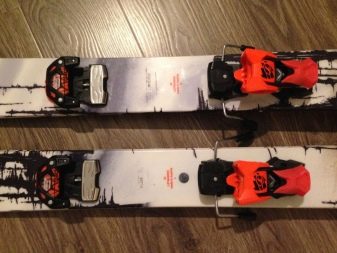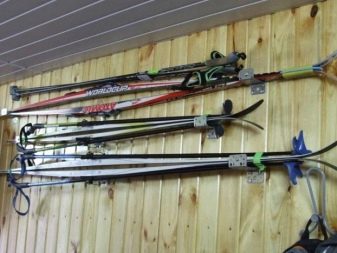Ski bindings
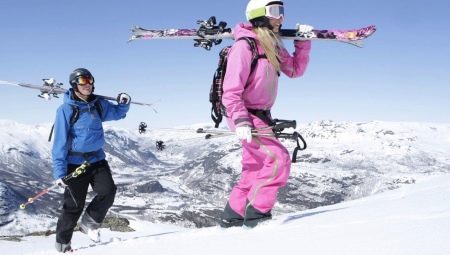
Mounts for alpine skis are an accessory and at the same time the second most important component, without which you cannot even drive on a flat track, simply pushing off with ski poles, not to mention descending from a mountain of any degree of inclination. The purpose of the mounts is to securely hold and act in collisions and overturns while driving.
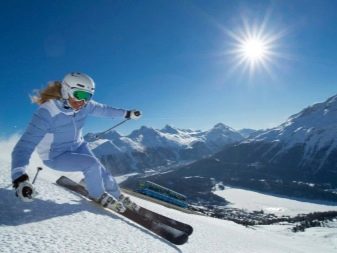
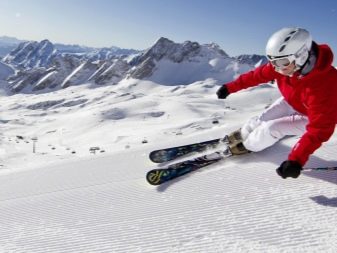
Features and working principle
The bindings are just as important as the skis themselves. Rigidly attached to the soles of the feet, the skis make it possible to maneuver in the conditions of twisting and difficult trails. But on a simple ski track, they are no less important: the skier does not move in a straight line and evenly like a train on a railroad. At the same time, skis that do not unfasten when excessive efforts threaten the legs with sprains, dislocations and fractures.
In other words, fasteners solve two problems - reliability and safety. If the effort that the feet exert on the fasteners is exceeded, the latter should unfasten. With a calm descent or movement, such situations are rare, but if the road is curved, the surface is uneven, then the ski will fly off as if automatically.
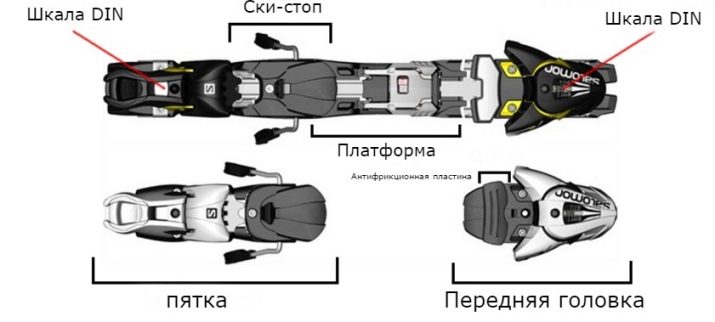
The attachment head is responsible for securing the toe of the boot. The back part keeps the foot on the ski in the heel area. If one suddenly jams and does not work, then the other should work. To prevent dangerous loads from damaging the legs - for example, rotating ones that pose a threat to the lower legs and knee bend, fastenings are made with the toe of the boot extended in the lateral direction if the force threshold exceeds the permissible value. The actuation of the detachable part in this direction is the most important thing. Falls forward or backward, with rotation, are the most dangerous in this respect.
When an athlete flies into the snow with his toes, continuing to move at attention, the knee ligaments experience maximum permissible loads, which will lead to their rupture. Here the heel part of the attachment should work, snapping forward and up. If the athlete falls backwards, then the toe attachments should work so that the legs are not stretched.
However, not all pro racing skis open upward - get the right binder model.
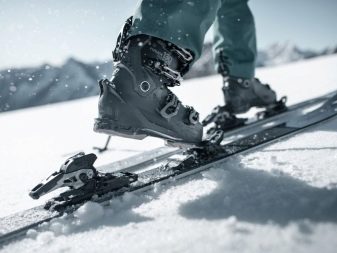
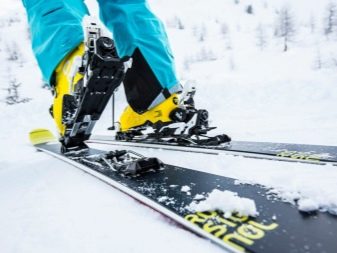
If a professional uses bindings designed for beginners, which unfasten at a significantly lower maximum permissible load than those designed for experienced skiers, then the skis will fly off during acceleration, without even encountering any bumps on the road. The skier's skid, his flying off the track is practically guaranteed - it will not end well with anything.
All non-injury loads are safe. The degree of danger - according to the permissible load on the mount - is determined by each athlete individually. To try out the bindings before going downhill, try turning them out while standing still with your ski on. Sideways opening of the mount is tested by turning the leg bent at the knee.
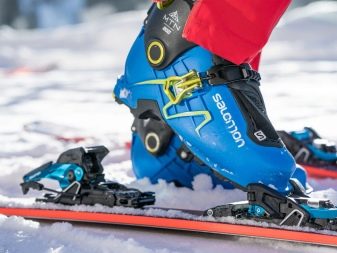

In addition to the rigid part, each fastening has an elastic component - the boot returns to its place, since under subcritical load this fastening did not work. The fact is that even a beginner will feel, when falling, in which direction the skis are leaning, and will fall after them, if it is already impossible to resist. The loss of at least one ski will lead to derailment - this happens when driving at maximum speed, where bumps come across on the ice. Overhauling skis is fraught with injury, underweight - flying off due to loss of skis at high speed.
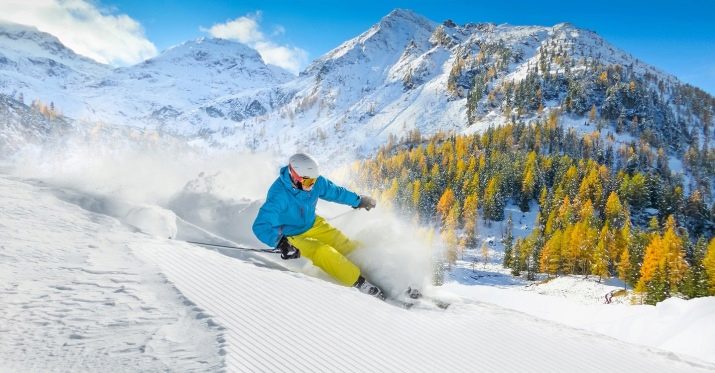
Species overview
Bindings by design are of different standards: mountain in the classic version are produced in the ISO 5355 standard, from which boots and bindings for other types of skis are made. The second name of this standard is Alpine, with which the MNC, WTR and Touring standards are compatible.
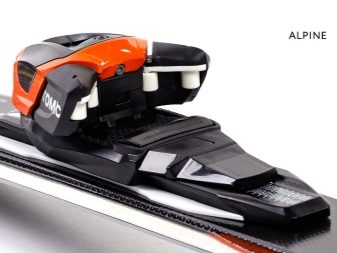
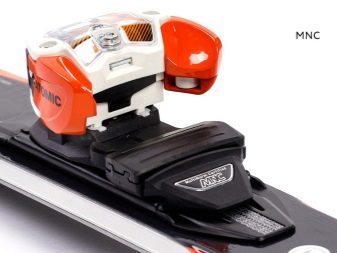
By installation type
According to the type of construction, the mounts are produced for installation on a special component or intended for direct mounting. Universal, in turn, allow installation on special components and without them. The second ones - in comparison with the first ones - are popular because of their simplicity, since they are placed on rails produced by the same manufacturer as the skis themselves.
These bindings are inserted into the skis and locked in place with a lever. No tools are needed to install the mounts - they just need to be inserted and immobilized. The direct type of installation allows these bindings to be used by all beginners - up to teenagers who have acquired an interest in ski surfing.
The size of bindings for teenage and adult shoes does not matter - the standards allow a wide range of sizes.

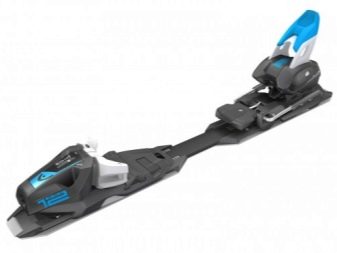
By material of manufacture
The old fasteners were made mainly in the form of metal structures. The decline in the price segment, the wide availability of these accessories has allowed many manufacturers to switch to plastic, which is resistant to cracking. In particular, it is high-density polyethylene, which does not crack - unlike, for example, polystyrene. Plastic mounts are more flexible than, for example, aluminum. Plastic is unacceptable to use only in the case when the athlete suddenly left the track and, for example, collided with a spur of a rock or bumped into another solid obstacle.
The safety factor of aluminum mounts is much higher than that of plastic ones, but in such a collision it is quite easy to break them. Regardless of the material of manufacture, the basic requirement is still met - if the permissible tensile force is exceeded, the mount must unfasten the skis from the boots.Metal mounts are also available today, but they cost several times more than plastic ones.
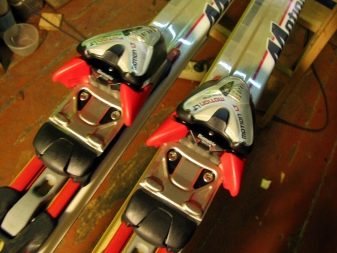
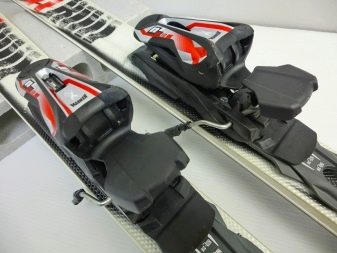
Top brands
Ski bindings are not limited to a list of specific brands and standards. For 2021, manufacturers have prepared a "top" of the best of them.
- PIVOT 14 DUAL WTR B115 - a product that many manufacturers are equal to. The model is developed on the basis of the "double standard" technology thanks to which the product is used on the regular and WTR standard soles. Armor protection of the nose area of the boot gives the skis good controllability and softens shocks. The disadvantage is the overpriced.

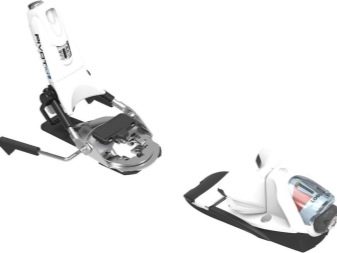
- Salomon GUARDIAN MNC 16L - a product used for aggressive free riding. Reliable fixation and controllability of the edging is a consequence of the application of the Multi Norm Certified technology. Suitable for WTR, Alrine-Touring and just Alpine soles.
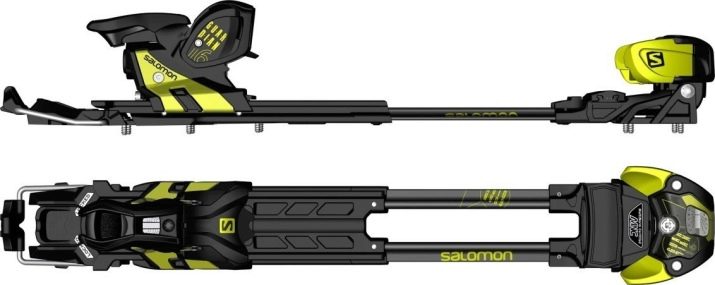
- ATOMIC Warden MNC 13 - reliability is knitted here with precision, precision of the move. Suitable for regular boots. Applicable in flat and alpine skiing. Designed for ski experts.
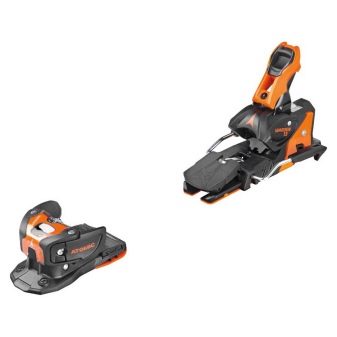
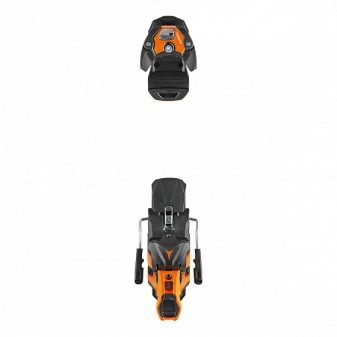
Selection by cost is not always a reasonable decision. Chasing cheap, you end up with low quality plastic.
How to choose mounts?
The DIN units that measure the permissible operating load of the fasteners when they are unfastened are calculated as follows. According to the instructions, the weight of the athlete is divided by 10. In these units, the threshold for triggering the latches (snapping off) varies. The more it is, the more the athlete should weigh. For children, this threshold starts from about 2-3 units, in adults it can reach 10 or more. This parameter is guided when choosing mounts in the first place - after the standard size from those that are available in the assortment of a particular sports store. Let's give real examples.
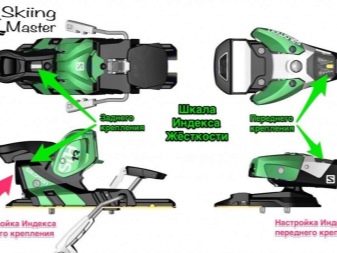

So, a professional athlete with a height of 175 cm and a weight of 75 kg, with a shoe of about 42 sizes (sole with a length of 31.5 cm) uses triggering at 6 DIN. The heel will be affected by a tensile force of 70 kg, and on a final tightening to 9 DIN, a force per 100 kg will act. The only condition is that the mount should not open or break. Based on this example, adolescents choose from 2.5 to 4.5 units, boys and girls - 4 ... 7, adult beginners - 4 ... 9, athletes with an average level of "pumping" - 4 ... 11, and for professionals this indicator reaches up to 12.
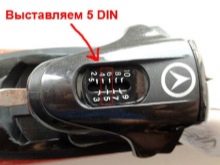

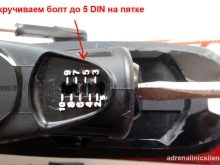
Tightening professional fasteners above 16 units is carried out at the risk of the athlete: The record is considered to be a tightening of up to 30 units, but this is a vanishing rarity. Fasteners with a tensile force of 24 ... 30 are a "piece", custom-made accessory, they are chosen by athletes who set world records.
We should also mention the female mounts. They allow for a higher heel lift than men. Measurement in DIN units among the female part of the contingent of skiers is slightly lower - up to 1.5 times than among male athletes.
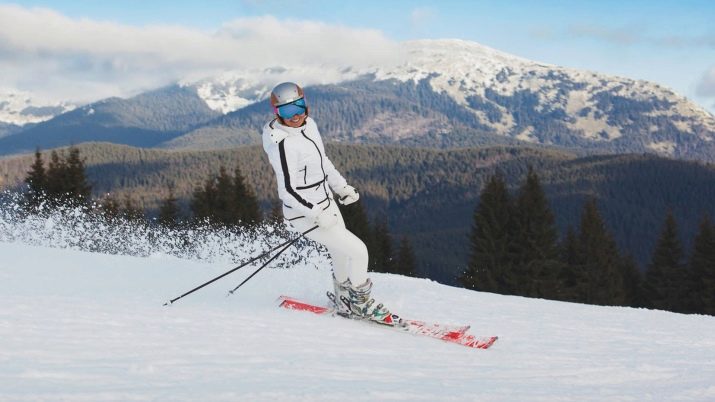
The creation and development of ski bindings lasted a very long time - we managed to reach the structure to which we are accustomed in 40 years.
First, the athlete's legs were protected from a kind of twisting in the form of a front head, which frees the toe of the shoes used in case of heavy load, and then - the heel, which opens up in case of a fall forward.
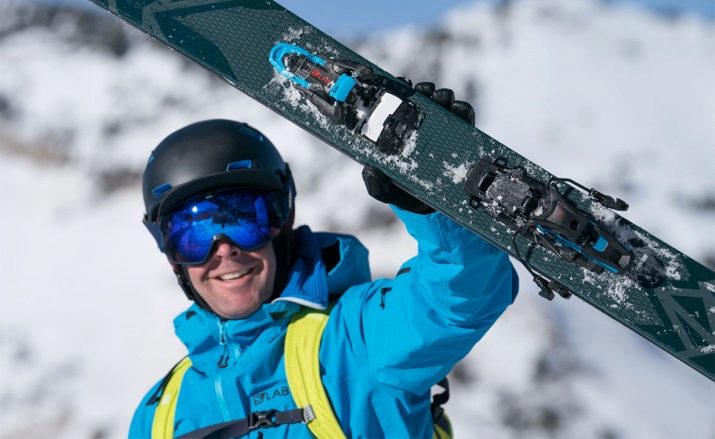
How to install and configure?
Despite the seeming simplicity, it is better to entrust the setup and installation to a specialist. In addition to age and weight, height, training experience, the length and area of the foot (and boot) are also taken into account. The force of pressing the boot forward is set - and this parameter is mandatory and critical to the inaccuracy of the adjustment. It is more time consuming to adjust the mounts, bending over or squatting, it takes skill here - taking into account the athlete's heels that shift in a sitting position.
It is more difficult to set them up with your own hands. In this case, the boot is carefully inserted into the front anchorage with the toe. The heel, in turn, is mounted on the ski foot pedal of the open rear mount.The mount should not be too far away from the heel - if so, adjust it. The heel of the boot should go into the rear attachment, which must first be pushed apart, with a barely noticeable effort, and not completely free - otherwise the ski will dangle.
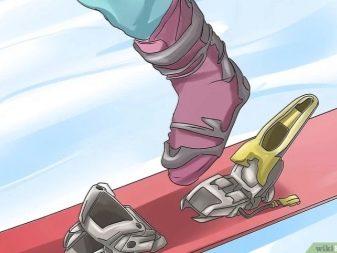
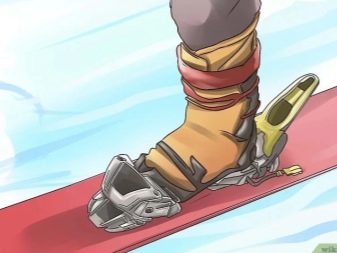
Insufficiently carefully positioned bindings will lead to a significant risk of flying off the track on the descent. It is more convenient to adjust the adjustment with a screwdriver - there are bolts with slots on the mountings for it. Bolts of the same size are not always used - check their compatibility with a specific screwdriver, as it can come in handy before you go out on a distance.
The calculation of the effort to which the binding is adjusted is reduced by 20% for ordinary athletes. For beginners or seniors, this figure is reduced by another 10%. Additionally, in the absence of form or at the beginning of the season, this indicator decreases by the same 10%. Such a safety margin is taken in case the athlete is threatened with injury. Of the two evils, the lesser is chosen - it is better to lose skis on the track and fly away from it to the side of the road than to end up in the hospital with a sprain or dislocation. Before storing skis for summer storage, it is recommended to lower the springs of the mountings.
